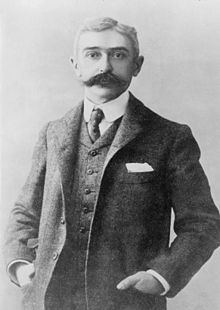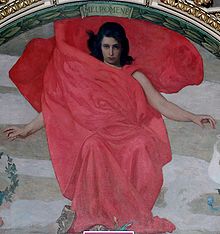Stamata Revithi
At that point she had given birth to two children, a son who died in 1895, aged seven, and another child who was seventeen months old by the time of the 1896 Olympics.
According to Olympic historian Athanasios Tarasouleas, Revithi, who was blonde and thin with large eyes, looked much older than her age.
He believed that a woman's greatest achievement would be to encourage her sons to be distinguished in sports and to applaud a man's effort.
[10] She answered the reporters' questions and was quick-witted when a male runner from Chalandri teased her, predicting that when she entered the Stadium, there would be no crowds left.
29 March], the old priest of Marathon, Ioannis Veliotis, was scheduled to say a prayer for the athletes in the church of Saint John.
Officially, she was rejected because the deadline for participation had expired; however, as Olympic historians David Martin and Roger Gynn point out, the real problem was her gender.
Before starting, she had the town's only teacher, the mayor, and the city magistrate sign a statement testifying to the time she departed from the village.
She ran the race at a steady pace and reached Parapigmata (the place where the Evangelismos Hospital stands today, near the Hilton Athens) at 13:30 (5½ hours).
[15] Revithi was not allowed to enter Panathinaiko Stadium—her race was stopped in Parapigmata by a few Greek military officers whom she asked to sign her handwritten report to certify her time of arrival in Athens.
[16] She stated to the reporters that she wanted to meet Timoleon Philimon (the General-Secretary of the Hellenic Olympic Committee) to present her case.
Historians believe that she intended to present her documents to the Hellenic Olympic Committee in the hopes that they would recognize her achievement.
[21] In March 1896, a French-language newspaper in Athens (the Messager d'Athènes) reported that there was "talk of a woman who had enrolled as a participant in the Marathon race.
[25] Lennartz presents the following account: a young woman named Melpomene wanted to run the race and completed the distance in 4½ hours at the end of February or the beginning of March.


